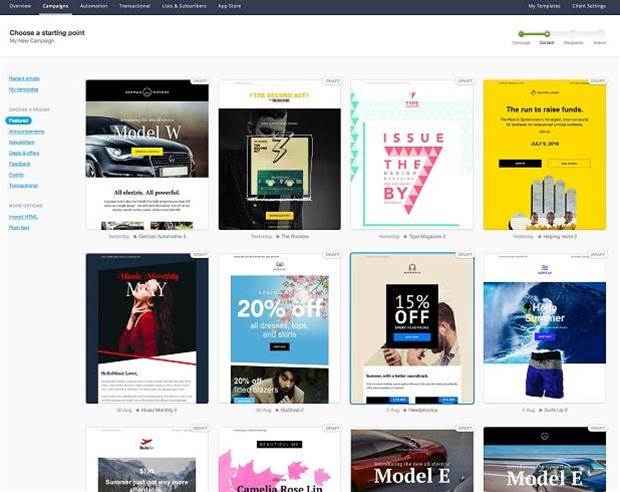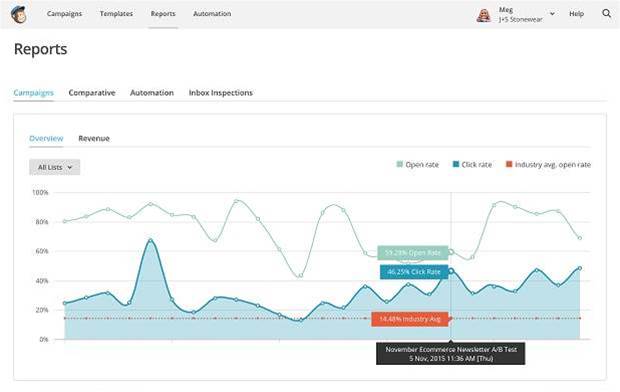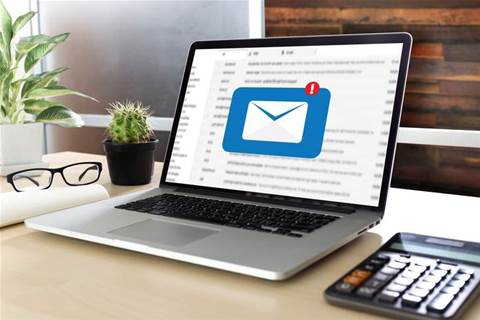What’s the most effective digital marketing tool? Many still swear by the humble email – but only if you do it right.
In our series to help you build or improve your business’s online presence, we’ve explained the basics of web design and hosting, search engine optimisation and using social media for business. In this feature we examine email marketing. And far from being the poor cousin of social and other more fashionable digital marketing techniques, email remains a popular and powerful medium.
Despite the popularity of social media and other relatively new communications apps such as Slack, the volume of emails and number of email users continues to rise, according to Radicati and Statista respectively. Yet email marketing still “has the best ROI of any marketing method”, according design agency Artful owner Nick Sibbing.
A US Direct Marketing Association study confirms this, finding that email has a median return on investment more than four times higher than other marketing formats surveyed, including social media and paid search.
It even works in the youth market. According to skate and scooter retailer Kick Push founder Darin Gersbach: “Email marketing is possibly the most important marketing we have.”
“We see really good results each time we connect with customers,” says Gersbach, echoing the familiar maxim that it is a lot easier and cheaper to keep an existing customer than to attract a new one.
Still, email marketing only works if you do it the right way.
Start with a strategy
Businesses need to start with a marketing strategy, according to strategic marketing advisor Tina Manolitsas. Thinking about business goals (such as increased brand awareness or more sales) and the ways in which marketing activities can help achieve them makes it possible to allocate the available budget to the activities that will do the most good.
Importantly, consider what you are trying to communicate, and whether your initial mailing list comprises customers, prospects or just people you've met at networking events. You really don’t want people to unsubscribe, so be sure to segment your list and craft your campaigns to appeal to a specific segment.

Furthermore, you should integrate your marketing efforts across different platforms. For instance, you might tweet a snippet from your email newsletter, incorporating a call to action such as a link to the page on your website where they can read the whole thing.
Which email marketing service?
You could theoretically do your own email newsletters by mailmerging with Word, Excel and Outlook – but you’d be missing out on a host of important marketing features, compared to services that offer professionally designed newsletters, email automation tools, analytics to measure the success of your campaigns, and more.
Email marketing services are generally quite cost effective too. In fact, MailChimp’s ‘forever free’ tier allows up to 2,000 subscribers and permits businesses to send up to 12,000 emails a month. Above that, prices start at $27 a month and depend on the volume of emails and features required. For example, Kick Push uses MailChimp to distribute its weekly newsletter and it costs the company around $300 a month for its 40,000 customers, according to Gersbach.
Other popular email marketing platforms include Campaign Monitor, Zoho Campaigns, Autopilot, Active Campaign, HubSpot and Campaigner.
Manolitsas says the top four considerations when picking an email marketing service are functionality, ease of use, reporting and automation.
The automation tools make it easy to send messages to subsets of your customers at different times. “It's all about listening to customers” and acting accordingly, she says.
Creating and maintaining your email list
The better email marketing platforms also provide code snippets and plug-ins for content management and ecommerce platforms such as WordPress and Shopify. These allow you to embed a newsletter signup form in the pages on your website.

You can also build an email list from your existing customer base or as part of a loyalty scheme.
Just remember there are privacy laws and that unsubscribing to newsletters is easy. If you go about things the wrong way, you can rapidly lose subscribers.
“A lot of small businesses don't understand privacy, but they have to comply with relevant laws and should use best practices,” Manolitsas warns. In particular, if you buy or start another business, make sure you understand what you’re allowed to do with the databases maintained by the old and new businesses, she says.
The Office of the Australian Information Commissioner has helpful guides and FAQs on privacy compliance for business.
You don’t want to be seen as a spammer either. At the very least, make sure you understand the Spam Act – see our feature Don’t get stung by Australia's anti-spam laws and the relevant section of ACMA’s site.
Be sensible about the frequency of emails too. This will depend on how much good-quality content you have, and how often it’s posted. But for most small and mid-sized businesses, one newsletter per week or even once a month should be enough – you don’t want to wear out your welcome.
Hodgestone Finance sends a newsletter once a fortnight plus a major issue every quarter, according to the company’s processing officer Alex Treherne.
The fortnightly newsletter updates customers with information about interest rates, new products and so on, while the quarterly edition summarises relevant news from the finance sector.
Next: Newsletter content and design tips, and measuring for success









.png&h=141&w=208&c=1&s=1)
